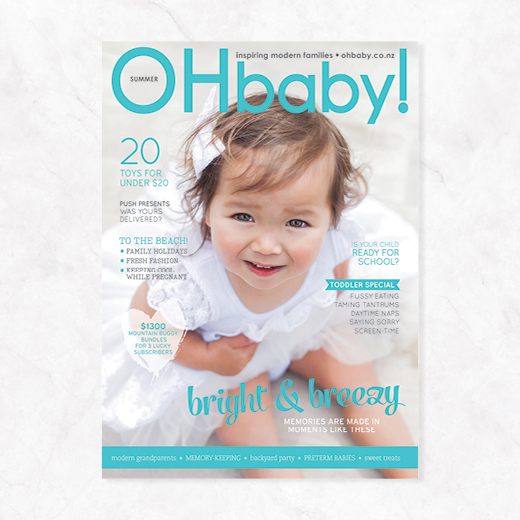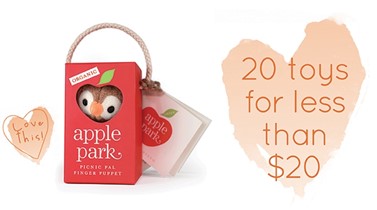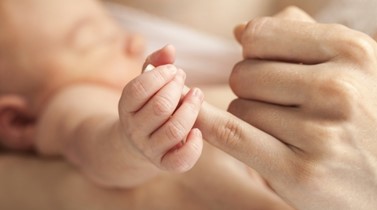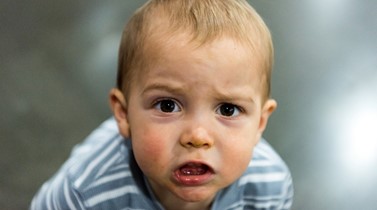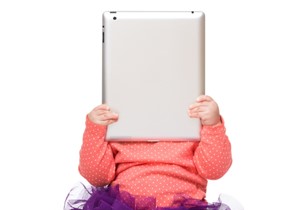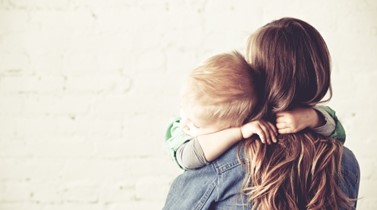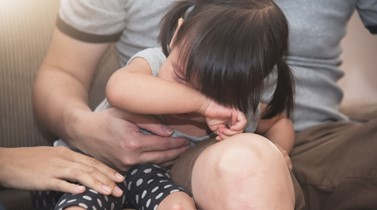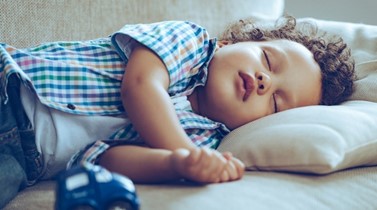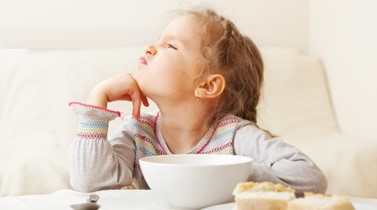Screen time - How much is too much?
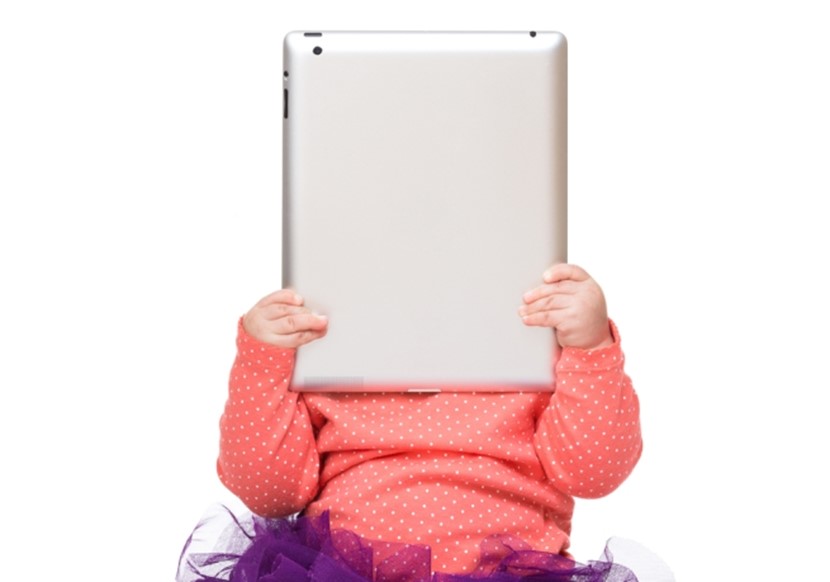
Living in a world increasingly distracted by screens, Alice Cranfield wonders what our youngest viewers are taking in, and whether or not we should be worried.
Figuring out how to monitor our toddlers' screen time can be tricky. It’s a controversial issue for those of us with young children, as the information available is often conflicting. On the one hand we hear that too much screen time, or any at all, is bad for our children’s development, yet on the flip side we hear that many apps and programmes are educational. What’s a parent to do?
In an interview with The New York Times, Steve Jobs revealed that his children had not seen an iPad as he limited the amount of technology his kids used at home. It really gets you thinking, doesn’t it?
This generation of toddlers is like no other before them. Homes today are filled with screens, from the television to computers, cell phones, iPads and even many of our kids’ toys. It’s interesting to keep in mind that the iPad was only introduced in 2010 and smart phones are fairly new too. The exact effects this screen-based society will have on our toddlers we don’t entirely know just yet —but as parents there are things we need to be aware of before simply hitting the 'on' button.
What are our toddlers watching?
The Growing Up in New Zealand study is currently tracking the development of 7,000 Kiwi children from before birth until early adulthood. As part of the research, the activities preschoolers engage in and their screen time habits are being monitored. Director of the study, Associate Professor Susan Morton, says that evidence collected will help to understand how much media today’s children are consuming. It will also help to understand how different patterns of use influence their behaviour, development and wellbeing.“Based on this research, relevant media guidelines for parents can be developed”, she says.
New Zealand doesn’t currently have a screen use guide for children, unlike countries such as Canada, Australia, France and the USA. Each of these countries recommend that children under two are not exposed to any screens at all, with those under five only being exposed to a maximum of one hour viewing per day.
Susan says we need to consider the different types of media that children engage with today in order to understand contemporary children’s screen time. Unlike previous generations, much of the new media today is interactive, rather than being entirely passive. “Many parents of the Growing Up children have reported that they feel the interaction offers learning experiences and socialisation opportunities for their children”, says Susan.
As the study is still in progress, information on media usage is currently available at two points in the participants’ lives —nine months and two years.
At nine months old, nearly a third of babies involved watched television programmes every day, and one in five watched them weekly. At two years old, four out of five children watched television, DVDs or videos daily. The average time spent watching TV or DVDs on a weekday was 1.6 hours. Screen time exposure is likely to be higher as, on top of these stats, many children are using tablets and smart phones regularly in their daily life too.
Concerning habits
Try to think of screen time as something to limit right from the word 'go'. Just like junk food, it’s not something you want your children to have too much of. You’ll find it easier to loosen up your restrictions down the track, as opposed to attempting to tighten them once your child has developed a taste. Screens are addictive, so what we do know is that habits formed at a young age will set the scene later on. The two-year-old who has lots of screen time is likely to have more at age three, then even more at age four and so on.
We’ve all seen toddlers or babies when a screen is switched on —they are instantly transfi xed. The first years of a child’s brain development are massive. In the first year alone, the brain triples in mass. Because the brain is in such a crucial stage of development, it is important to remember that screens have a different impact on infants. Flashing images, loud sounds and constant movement are simply too much for a child under two to understand. Babies can’t distinguish or make sense of objects on a screen at this point in their life, so it’s better to keep screens off altogether.
When a screen is on, conversation becomes minimal. This may sometimes be the desired outcome, but keep in mind that much of our children’s development comes from simple conversing and visual connections with us throughout the day.
One of the major issues when considering screen time is what our kids are not doing when the screen is on. Play is a crucial part of a child’s development because children learn by doing.
Playcentre New Zealand’s Operations Manager Veronica Pitt explains that when children do a new activity, it forms new pathways and connections in their brain. When the activity is repeated, the pathway is strengthened; these connections are not formed when young children watch the activity on a screen.
“Play is how children naturally develop their bodies, skills and interests”, she says. “Through play, children explore their world, work through new ideas and challenge themselves to do new things. When children are allowed to follow their own interests and ideas, they do the things that are right for their stage of development.”
When a screen is on, be mindful of time and stick to the limits you have set. It is a good idea to watch single programmes, as opposed to simply having the television on. Once the show comes to an end, switch the screen off. It can be tempting to let the shows roll into each other, but setting limits is important for the whole family.
If your child is watching a programme, join them and talk to them about what is happening. This provides an opportunity for you to share the experience together, and you can put your feet up for a while too.
International research shows that excessive screen time can lead to obesity in children – this is a no-brainer really; an adult who spends time sitting down with no exercise is more likely to be obese too. Manage your children’s screen time and be sure to have screen-free time, where you send your kids outside and encourage them to explore.
Parents fed up
Julie Crean and Jel Legg began The Screen Free Project after struggling with the amount of time their children were spending on screens – to the detriment of hobbies, interests and basic communication.
“Screen time became an overbearing percentage of their spent leisure time and we weren’t the only ones to feel something was amiss”, said co-founder Julie Crean.
Julie and Jel began researching and were amazed that many of the issues they found surrounding screen time were not being talked about in New Zealand. After watching a documentary, Project Wild Thing, the pair connected with its message that too many children were spending time in front of screens and losing touch with real-life experiences.
The Screen Free Project was created to help raise awareness, believing ‘screen-free time’, rather than the absence of screens completely, would give Kiwi kids a better life balance.
Julie said many parents have found the website as they search for solutions to help cut down screen time. “They are fed up with toddlers who fall apart when the iPad is taken from them and they wonder how something that had ‘seemed like an innocent thing’ had turned into a nightmare”, she says. “They are grateful to have some guidelines, the support of others and some screen-free suggestions.”
Lead by example
As with anything, your children will do whatever it is they see you doing. If you put on the television to relax, your children will mimic this behaviour. While convenient, smart phones are also a huge distraction from being present in the moment. Resist the urge to check social media on your phone throughout the day. Even checking emails can send us off on an Internet tangent, so try to limit your own screen time when under the watchful eyes of littlies.
SCREEN-FREE IDEAS
If you’d like to break the habit or lessen screen time at your house, try the ideas below and look to some of these helpful Kiwi resources.
● Children love to dance so remember to switch on music from time to time. Having different music on during the day can set the tone for littlies, so embrace its power. Slow relaxing music when you need some calm, or fun fast music when you are full of energy.
● Try setting up a reading station at your house. Having books easily accessible is a great way to encourage reading. With happy readers in the house, you’ll actually have a lot more peace than you would with the television on.
● The Screen Free Project is a wealth of information and advice surrounding screen time: screenfreeproject.co.nz
● Julie Crean, co-founder of The Screen Free Project, has also set up the website planmyplay.co.nz, with free activities for Kiwis to enjoy up and down the country.
● SKIP (Strategies for Kids/Information for Parents) has released a free app called Tiny Adventures, packed with useful ideas for play. Parents are asked to select the time they want to fi ll –from fi ve minutes to one hour –then select from a list of activities for kids to choose from. Ironic that this is a digital app, but very helpful when you have completely run out of ideas!
● Ako Books (The New Zealand Playcentre Publications) have a selection of books available with play ideas for children —from blocks to carpentry, messy play and dance games. Check out akobooks.co.nz
Alice Cranfield is a freelance journalist living in Auckland’s Piha, and mother of a vivacious toddler and new twins.

AS FEATURED IN ISSUE 32 OF OHbaby! MAGAZINE. CHECK OUT OTHER ARTICLES IN THIS ISSUE BELOW
